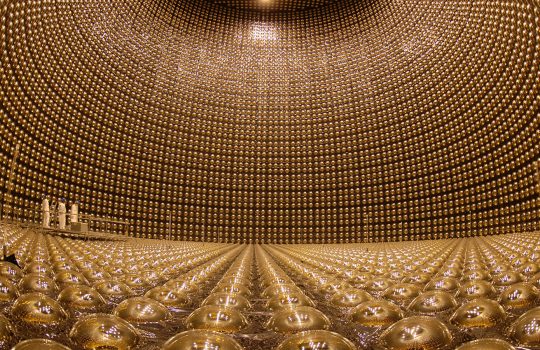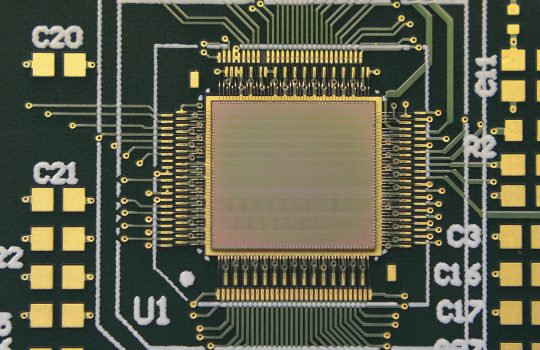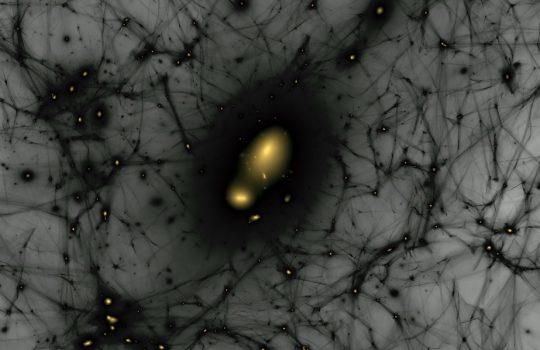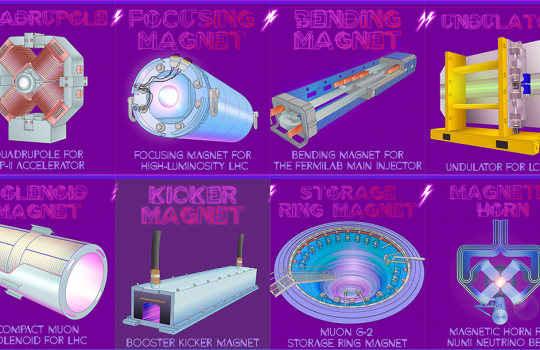Giving voice to neutrinos: Fermilab guest composer David Ibbett releases neutrino-inspired video and commentary
An ensemble of soprano, strings, piano and electronics gives voice to the mysterious neutrino in David Ibbett’s latest musical work as Fermilab guest composer. Mapping the waves of neutrino oscillation onto melodies played by the strings, Ibbett sonifies a neutrino phenomenon typically represented in abstract mathematical expressions. Hear the performance and Ibbett’s comments in this four-minute video.










